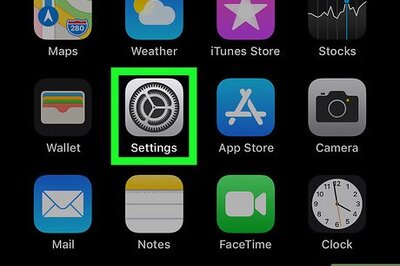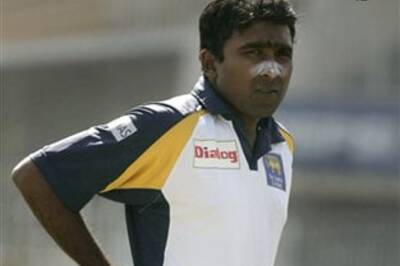
views
One of the basic lifesaving techniques taught in first-aid is cardiopulmonary resuscitation commonly known as CPR. It is an emergency procedure performed when the heart stops beating. If such a situation ever occurs, every second counts. From permanent brain damage to death, the repercussions could be severe to life-threatening for a person whose heart has stopped breathing. If someone can perform CPR, it can increase the chances of survival until medical help arrives.
Always remember CPR correctly performed can help maintain active blood flow. While it might seem there is only one way to perform CPR, that is not the case. These are distinctions between how this life-saving technique is performed on adults and how it is done on children. Here is a step-by-step guide:
CPR On Adults
There are two steps that should be followed when performing CPR on an adult. This includes chest compressions and rescue breaths. You should only perform rescue breaths if you are trained and feel confident in doing it. In any other scenario, only attempt hands-only CPR. Here is how you can perform both types of CPR:
Hands-only CPR
- To start chest compressions, kneel next to the person and place the heel of your hand on the breastbone. This is the center of the chest.
- Your other hand should be on top of the hand that?s on the person’s chest. Interlock the fingers of both hands. Make sure your shoulders are directly above your hands.
- Use your body weight to press straight down by 5 to 6 centimeters on the person’s chest.
- Do not remove your hands from the chest. Simply release the compression and allow the chest to return to its original position.
Keep in mind that the rate of chest compressions should be 100 to 120 times a minute.
CPR With Rescue Breaths
- Perform the chest compressions as mentioned above. Keep in mind that you have to stop after every 30 chest compressions to give two rescue breaths.
- Tilt the person?s head gently and lift the chin up with 2 fingers.
- Pinch their nose and seal your mouth over their mouth. Blow steadily and firmly into their mouth for about 1 second. Perform two rescue breaths while checking that their chest rises.
- Repeat the cycle until help arrives.
CPR On Children
As opposed to with adults, CPR should be carried out with rescue breaths on children. This is because a child is more likely to have a problem with their airways and breathing than a problem with their heart.
On Infants (Less Than 1 years old)
- Place one hand on the infant’s forehead and gently tilt the head back. This will open their airway and you can remove any visible obstructions from their mouth and nose.
- Place your mouth over their mouth and nose and blow steadily and firmly into their mouth. Unlike adults, an infant should be given 5 rescue breaths while checking for their chest to rise.
- To perform a chest compression, place two fingers on the breastbone and push down by 4 centimeters. The depth of chest compressions is vital. So, if you are unable to achieve it, use the heel of one hand.
- For every 30 chest compressions at a rate of 100 to 120 a minute, give 2 rescue breaths.
On Children (Over 1 years old)
- Just like for an infant, the first course of action must be to open the child?s airway by gently tilting the head back and lifting the chin with one hand. Make sure there are no visible obstructions.
- Pinch the child?s nose and seal your mouth over theirs to blow steadily and firmly into it. Give 5 initial rescue breaths as you check for their chest to rise.
- Place the heel of one hand on the breastbone and push down by 5 centimeters. Use two hands if you cannot achieve the desired depth.
- For every 30 chest compressions at a rate of 100 to 120 a minute, there should be 2 breaths.
Always remember to call the emergency services right away and get the patient help. Perform CPR for as long as you can or until emergency services arrive. Never perform CPR unless you are trained to perform it.
Read all the Latest Lifestyle News here


















Comments
0 comment